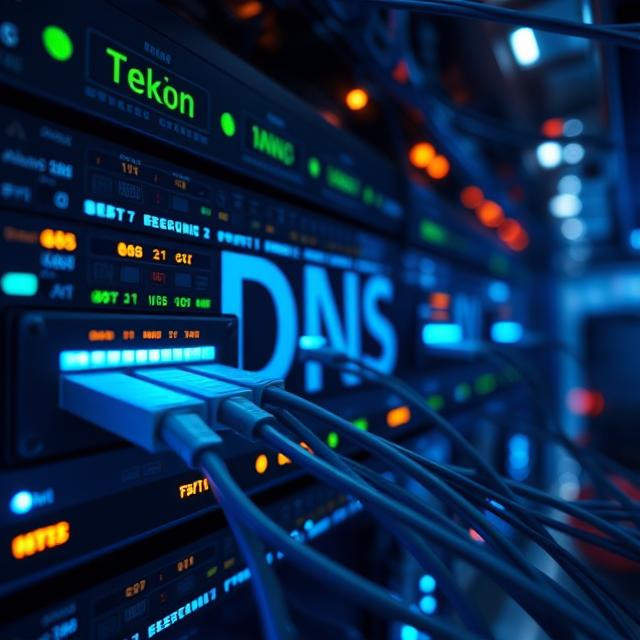Many companies host their own DNS services especially if they require tight control, internal resolution, or operate in highly regulated environments. But in a practical sense a hybrid approach combining internal hosted with DNS services with external trusted DNS services resolvers provides the best balance for public-facing resolution, ensuring redundancy and resilience.
- The Role of DNS in Modern Networking
- Key Differences Between IPv4 and IPv6: Why Was IPv6 Invented?
- Personal Observations: IPv6’s Growing Pains
- Ensuring Reliable DNS with a Floating Virtual IP and Resolvers
- Spotlight on DNSMasq: A Lightweight DNS Resolver
- Dual Stack and DNS Priorities
- Configuring Windows 11 for Dual Stack and DNS Priority
- How about Linux based systems: Ubuntu?
- The Road Ahead: IPv6’s Future
- TLDR: Summary
A hybrid approach is ideal for snapWONDERS.

Before we dive in to the world of DNS, IPv4, IPv6 and networking setups — let’s take a look at the roles of DNS and their purpose.
The Role of DNS in Modern Networking
The Domain Name System (DNS) functions as the internet’s directory service. Its primary role is translating human-friendly domain names like snapwonders.com into machine-friendly IP addresses that computers and routers use to locate each other across networks. Without DNS, users would need to memorize complex IP addresses, making web browsing cumbersome and impractical. DNS servers handle billions of such queries every day, ensuring smooth, seamless access to websites and online services.
Key Differences Between IPv4 and IPv6: Why Was IPv6 Invented?
IPv4, introduced in the 1980s, was designed with 32-bit addresses, supporting around 4.3 billion unique IP addresses. As the internet expanded exponentially, this limit became problematic, leading to address shortages.
IPv6, developed in the 1990s and officially standardized in 1998, introduces 128-bit addresses, vastly increasing the address space to approximately 340 undecillion addresses. The main reasons for IPv6’s creation include:
- Address exhaustion: To accommodate the explosive growth of connected devices.
- Simplified network configuration: IPv6 supports auto-configuration features like Stateless Address Autoconfiguration (SLAAC).
- Enhanced features: Better security (IPsec mandatory), improved routing efficiency, and simplified packet headers.
Differences include:
Aspect IPv4 IPv6 Address size 32-bit 128-bit Address notation dotted decimal colon-separated hexadecimal Header complexity More complex, additional processing Simplified, faster processing Support for mobility and security Optional IPsec IPsec mandatory, better security features
Pros and Cons of IPv4 vs. IPv6
Aspect IPv4 IPv6 Address Space Limited (~4.3 billion addresses) Vast (~340 undecillion addresses) Setup Complexity Relatively simple More complex due to new features and configurations Performance Mature, well-optimized, reliable Potentially faster in newer infrastructure but sometimes sluggish due to adoption issues Overheads Slightly higher due to NAT and fragmentation Efficient, no need for NAT, simpler headers Compatibility Universally supported Growing support, but some legacy systems lag Security Optional IPsec IPsec mandatory
Personal Observations: IPv6’s Growing Pains
In practice, using IPv6 can sometimes feel sluggish. Websites often load slowly, or timeout compared to IPv4, leading to a frustrating user experience. Obviously, this may be due to many varied reasons that has nothing to do with DNS, but when DNS itself has been determined to be the culprit then this is potentially due to:
- Incomplete IPv6 deployment across websites and CDNs.
- Sub-optimal routing paths in IPv6 networks.
- DNS resolution delays for AAAA records.
- ISP or network hardware not fully optimized for IPv6.
While IPv6 promises a brighter future, its current maturity level means many users experience a less smooth browsing experience compared to IPv4. It’s a classic case of “early adopter” teething problems.
Ensuring Reliable DNS with a Floating Virtual IP and Resolvers
To mitigate these issues, deploying a floating Virtual IP (VIP) that points to a lightweight, local DNS resolver supporting both IPv4 and IPv6 is recommended. This setup offers several advantages:
- Always-on DNS resolution, regardless of external outages.
- Consistent local resolution speeds.
- Flexibility to switch upstream DNS providers without impacting clients.

Additionally, chaining in high-performance DNS resolvers — such as Google DNS (8.8.8.8), Cloudflare (1.1.1.1), or OpenDNS — can improve resolution times and reliability. These can serve as last-resort fallback options when your primary DNS encounters issues.
Spotlight on DNSMasq: A Lightweight DNS Resolver
DNSMasq designed for Linux and Unix-link systems that is a popular, lightweight DNS forwarder and DHCP server designed for small networks, embedded devices, or local development environments. Its features include:
- Caching: Stores DNS query results to speed up subsequent lookups.
- Support for DHCP and DHCPv6
- Support for both IPv4 and IPv6
- Configurable forwarding: Can forward DNS queries to multiple upstream resolvers.
- Low resource footprint makes it ideal for home labs or embedded systems.
Using DNSMasq as a local resolver provides fast, reliable DNS responses and the flexibility to chain multiple upstream resolvers, optimizing performance and resilience.
Dual Stack and DNS Priorities
Generally, all modern OS supports dual IPv4 and IPv6 stacks simultaneously.
Configuring Windows 11 for Dual Stack and DNS Priority
Windows 11 supports both IPv4 and IPv6 stacks simultaneously, however by default, it prefers IPv6 for internal networking and DNS resolution. However, you can influence this for DNS purposes by:
- Adjusting DNS Metric Levels: Set the IPv4 DNS server’s metric lower (e.g., 10) and IPv6’s higher (e.g., 300). Windows will then prioritize DNS resolution over IPv4, which can lead to faster, more reliable browsing if IPv6 is underperforming.
- How to do this:
- Open Network & Internet Settings > Change Adapter Options.
- Right-click your network connection > Properties.
- Select Internet Protocol Version 4 (TCP/IPv4) > Properties.
- Click Advanced. Uncheck Automatic metric and set a low value (like 10).
- Repeat for Internet Protocol Version 6 (TCP/IPv6), setting a higher metric (like 300).
This configuration maintains IPv6 connectivity while favouring IPv4 for DNS resolution, balancing compatibility and performance.
How about Linux based systems: Ubuntu?
Linux and specifically Ubuntu supports both IPv4 and IPv6 stacks simultaneously. On most Linux systems, configuring only IPv4 DNS servers results in IPv4-only DNS resolution. However, the system’s IPv6 status (enabled / disabled) and resolver configuration influence whether AAAA records are attempted or resolved.
The Road Ahead: IPv6’s Future
As infrastructure and services increasingly adopt IPv6, and as routing and DNS resolution improve, we can expect the performance and reliability of IPv6 to surpass IPv4. When that happens, adjusting DNS metrics to favour IPv6 will make sense, unlocking the protocol’s full potential.
Until then, a hybrid approach — using dual-stack configurations, local resolvers, and strategic DNS preferences — ensures optimal browsing experiences today.
TLDR: Summary
DNS is the backbone of our internet experience, translating user-friendly domain names into IP addresses. While IPv4 remains the reliable standard, IPv6 offers the future’s address space and features but faces adoption hurdles. Personal experience suggests that IPv6, at present, may introduce delays and instability — highlighting the importance of flexible DNS setups.
Implementing a local, lightweight resolver like DNSMasq, deploying floating VIPs, and intelligently managing DNS metrics on Windows 11 allows users to optimize performance and prepare for a future where IPv6 is fully mature. As adoption accelerates, these configurations will facilitate a smoother transition, ensuring the internet remains fast, reliable, and scalable for generations to come.

About the Author
Hi there, I’m Kenneth Springer (Founder / Technical Lead / Senior Full Stack Developer / Lead Solution Architect / Engineer / Innovator). All too often I see digital content being shared on social media and online and ponder about privacy concerns, hidden metadata, tracking, copyrights, online safety, steganography and accessibility. I created this website to create awareness and help make a better world online!

